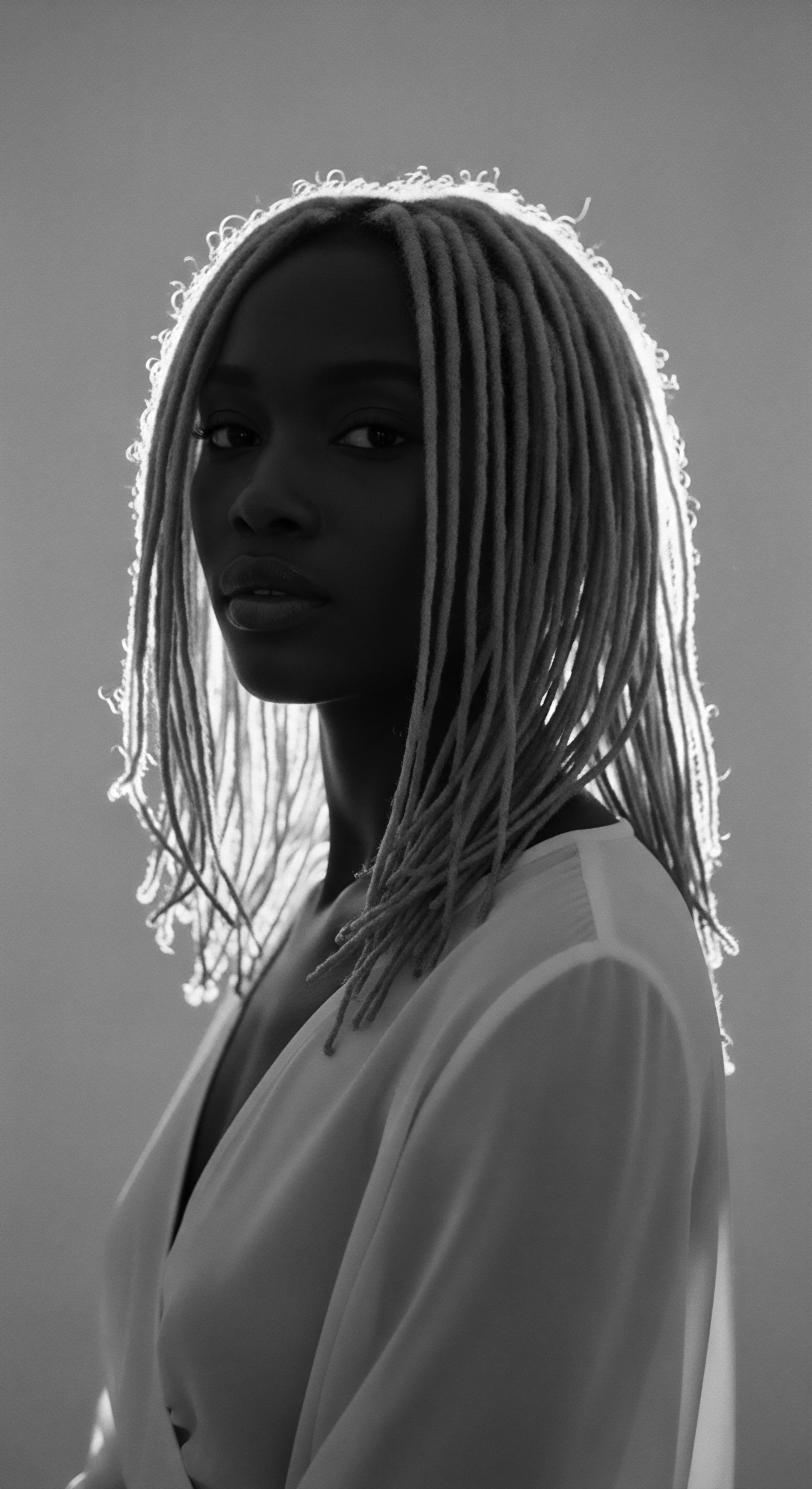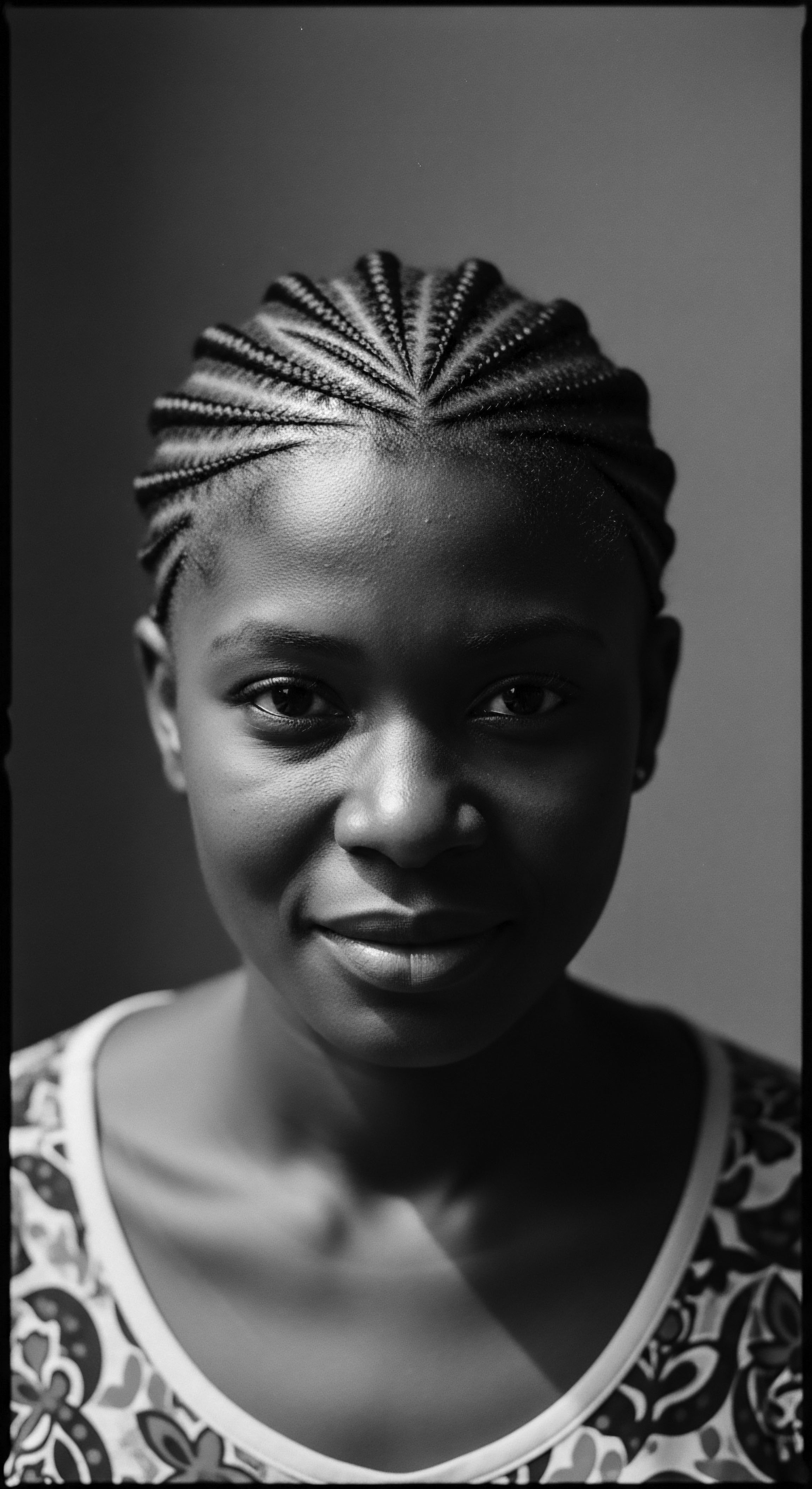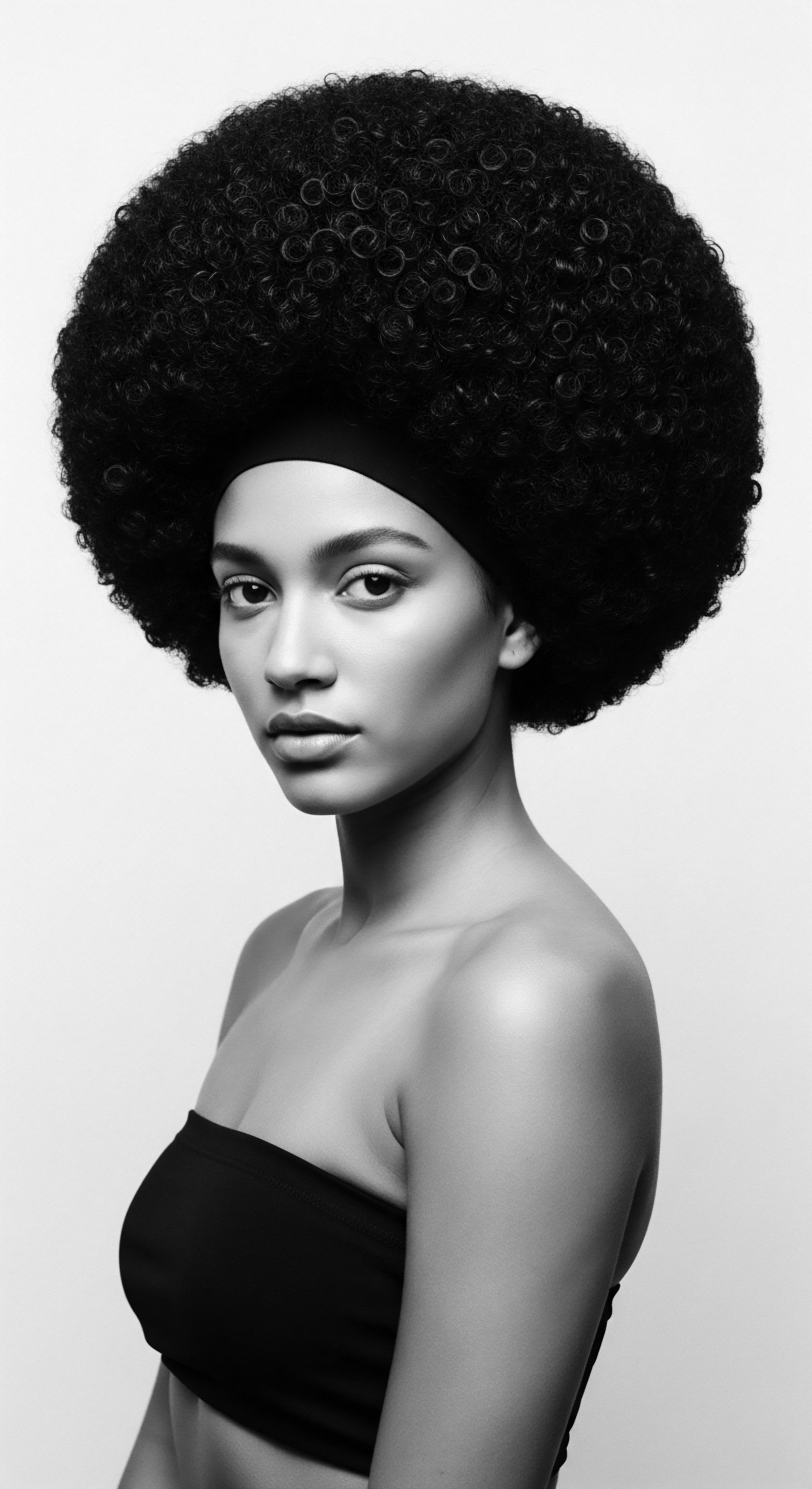
What is the role of hair in Black identity?
Hair in Black identity is a living archive, intricately linked to textured hair heritage as a symbol of cultural continuity, resilience, and profound self-definition.

How do historical styling tools relate to modern textured hair practices?
Historical tools, from bone combs to early hot irons, shaped textured hair practices by aligning with its unique structure and cultural heritage, continually informing modern care.

How do ancestral practices guard textured hair?
Ancestral practices guard textured hair by emphasizing protective styling, natural emollients, and holistic wellness, deeply rooted in heritage.

In what ways do historical braiding techniques connect to modern hair science?
Historical braiding techniques serve as intuitive ancestral science, protecting strands and informing modern textured hair care.

How do cornrows connect modern Black identity to historical acts of resistance?
Cornrows deeply connect modern Black identity to historical resistance through cultural preservation, covert communication, and an enduring assertion of heritage.

Can modern science explain the effectiveness of ancient hair remedies for textured hair?
Modern science confirms the deep efficacy of ancient hair remedies for textured hair, rooted in ancestral knowledge and heritage.

How did arid climates influence textured hair care?
Arid climates compelled ancestral communities to develop rich, protective hair care traditions, deeply influencing textured hair heritage.

How does textured hair architecture enable ancestral styling techniques?
Textured hair's unique coil and follicle shape naturally enable ancient coiling, braiding, and knotting techniques, preserving a rich cultural heritage.

What is the heritage of cornrow braids?
Cornrow braids carry a heritage spanning millennia, signifying identity, communication, and resilience within textured hair communities.

How did ancestral hair rituals support sun defense for textured strands?
Ancestral hair rituals for textured strands provided sun defense through physical barriers, protective styling, and nourishing plant-based elixirs, deeply rooted in heritage.

How does modern science validate ancient hair wrapping for textured hair?
Modern science affirms ancient hair wrapping practices by demonstrating their efficacy in reducing friction and retaining moisture for textured hair.

In what ways do historical practices validate current scientific understanding of textured hair?
Historical hair practices validate current science by demonstrating intuitive comprehension of textured hair's unique structure and needs.

How did protective styles influence hair length in Black heritage?
Protective styles historically preserved length in Black heritage by reducing breakage and safeguarding fragile textured hair.

What historical hair practices sustained length in textured hair?
Historical textured hair practices sustained length through protective styles, natural ingredients, and communal care, deeply rooted in African heritage.

What biophysical reasons make textured hair vulnerable overnight?
Textured hair's unique coil and cuticle structure makes it prone to overnight friction and moisture loss, a vulnerability addressed by centuries of ancestral protective heritage.

In what ways do modern natural hair movements echo ancient heritage?
Modern natural hair movements powerfully echo ancient heritage through their focus on holistic care, symbolic styling, and the reclamation of textured hair as a source of identity.

What traditional practices influenced modern textured hair care routines?
Traditional practices rooted in African heritage centered on moisture, protection, and communal care, fundamentally shaping modern textured hair routines.

What historical techniques continue to shape contemporary styling approaches for textured hair?
Ancient African hair care techniques, especially braiding and protective styling, profoundly shape contemporary textured hair approaches, embodying deep cultural heritage.

How did ancient protective styling honor heritage?
Ancient protective styling deeply honored heritage by intertwining practical hair care with rich cultural, social, and spiritual meanings.

In what ways do heritage hair care rituals address scalp irritation?
Heritage hair care rituals address scalp irritation through natural ingredients, gentle techniques, and protective styles that prioritize nourishment and balance.

How did textured hair’s biology influence ancestral care?
Textured hair's unique elliptical follicle shape and curl pattern necessitated ancestral care focused on moisture retention and protection, shaping a rich heritage of rituals and ingredients.

What ancestral practices supported textured hair growth?
Ancestral practices for textured hair growth centered on natural ingredients, protective styling, scalp care, and holistic well-being, deeply honoring heritage.

What ancestral styling methods shielded textured hair from harm?
Ancestral methods protected textured hair through low-manipulation styles, natural oils, and communal care, preserving its vitality and heritage.

How does textured hair’s biology benefit from Chebe’s protective properties?
Chebe protects textured hair by forming a moisturizing, strengthening barrier, deeply rooted in African ancestral heritage to retain length and resist breakage.

What is the ancestral significance of hair protection for textured hair?
Ancestral hair protection for textured hair holds profound heritage, reflecting survival, identity, and spiritual connection woven through generations of intentional care.

What historical moisture practices sustained textured hair?
Historical moisture practices for textured hair relied on natural emollients and protective styles, rooted in centuries of ancestral wisdom and cultural heritage.

